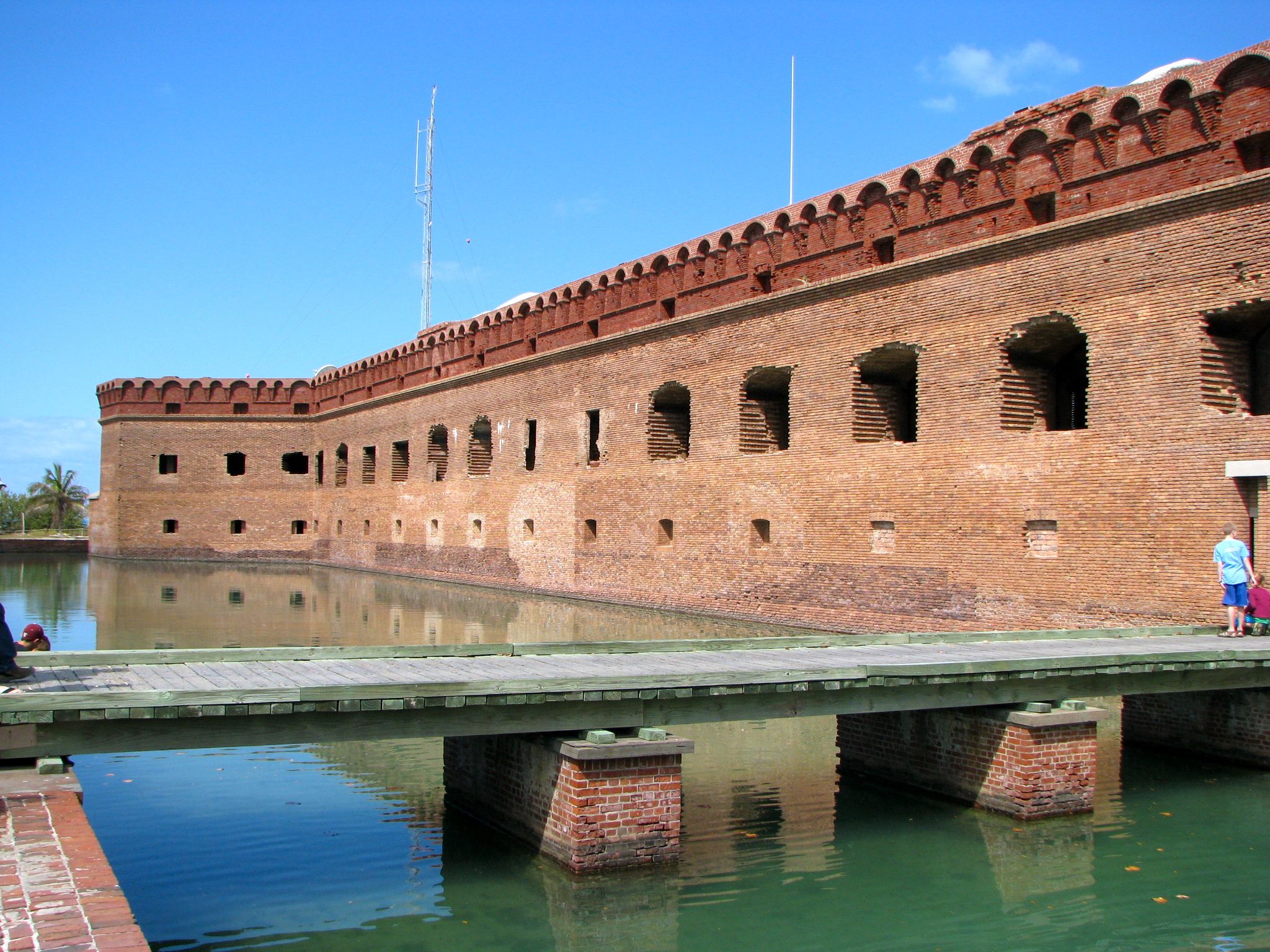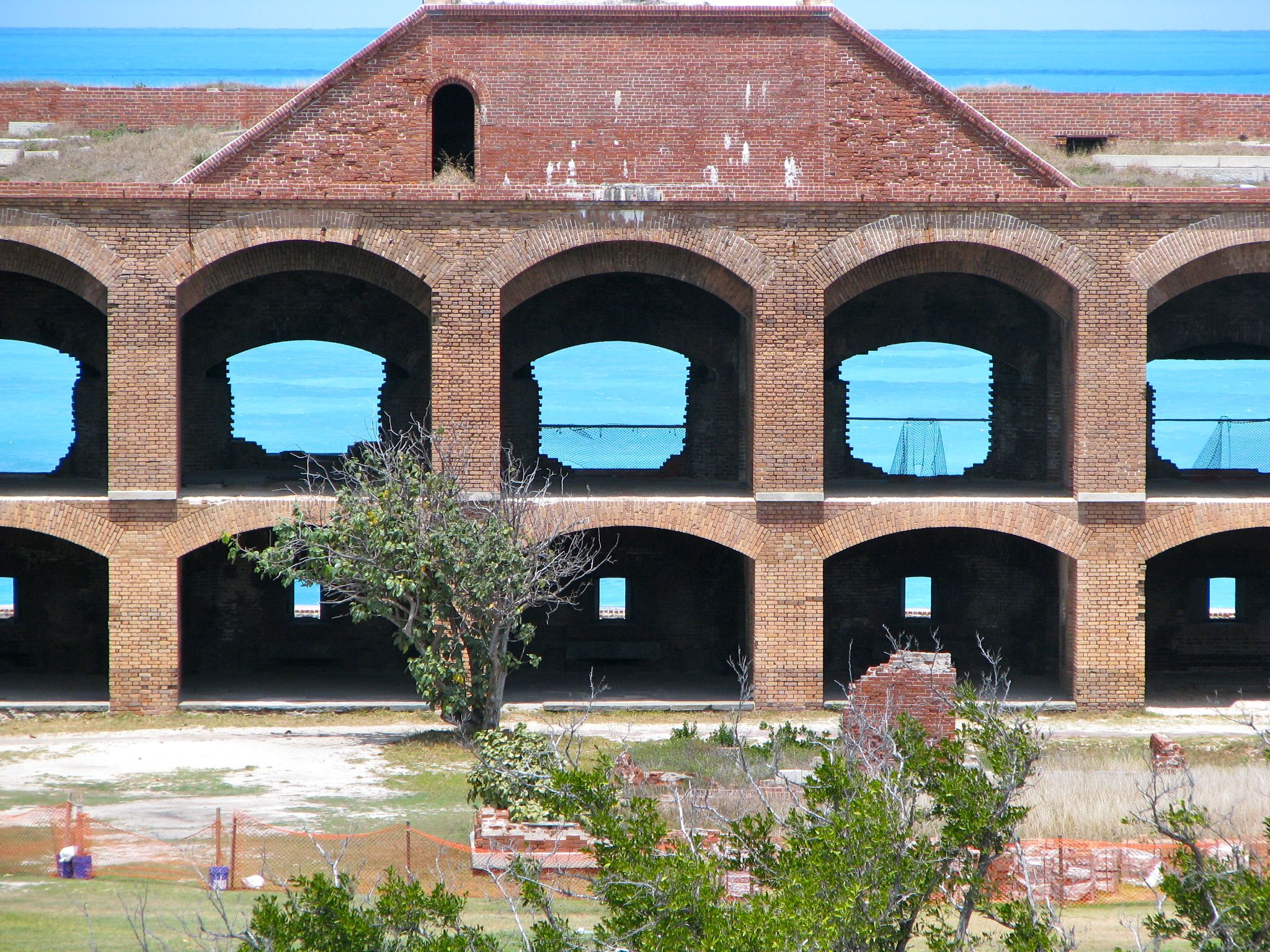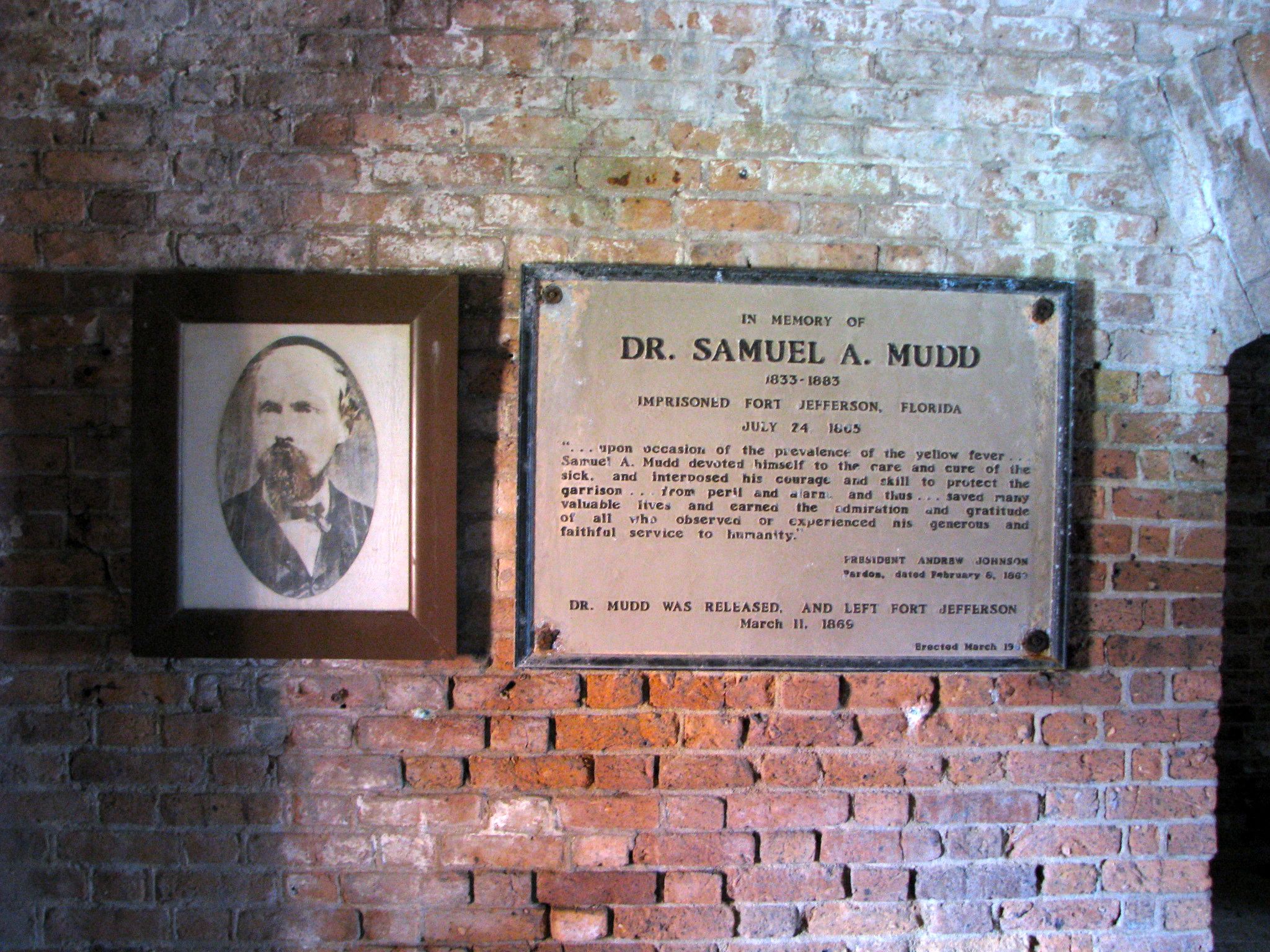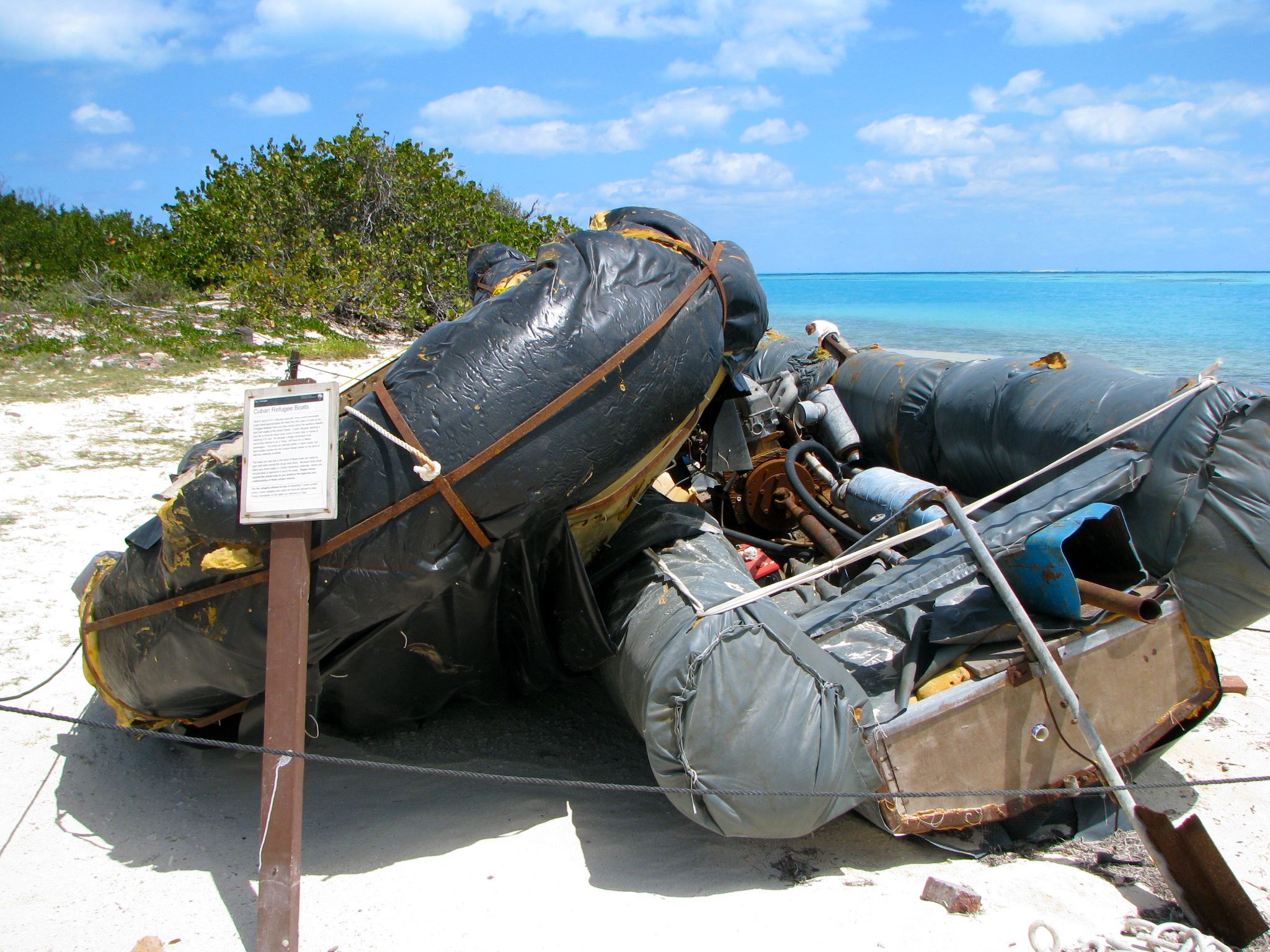Dry Tortugas National Park, Florida (April 2009)
Identifying the Need

A massive masonry fortress rose on Garden Key, one of the Dry Tortugas, seventy miles away from Key West in the Gulf of Mexico (map). It served as a link in the chain of coastal fortification built by the United States Army Corps of Engineers in the wake of the War of 1812. British forces had sacked the nascent nation’s capital city of Washington, and the United States determined that it would never leave its coastlines undefended again. Invading forces would be punished severely.
Protecting the Gulf
A lighthouse had been located previously on Garden Key (see my Dry Tortugas Lighthouses page) so they understood the terrain and its strategic positioning. Fort Jefferson, named after the third President, would be a powerful structure in its own right and deadly when combined with Fort Taylor in Key West (see my Fort Taylor page).
The two of them combined would be able to rule a vital shipping channel into the Gulf. They could protect all trade along the American coastline along with the great interior of the Mississippi River watershed. However construction would not be an easy task. Nothing existed on these barren islands, not even water. The Dry Tortugas name came honestly.
Construction
Construction began in 1846. Large quantities of slave and prisoner labor provided the bulk of the back-breaking work. Master craftsmen and skilled artisans handled the complicated tasks. They built a tremendous edifice three rows high with walls eight feet thick. Vaulted casements made room for 420 heavy cannons along six sides. Fort Jefferson became the largest masonry fort in the Western Hemisphere. The navies of the day could not survive an assult on this fort.
Everything had to be transported to the island. Imagine the difficulty of moving sixteen million bricks to this flyspeck in the middle of the Gulf of Mexico. The bricks themselves came from Pensacola and sailed to the fort on a barge, a journey of several days. Construction didn’t stop for the Civil War either, even with Pensacola part of the Confederacy. Bricks then had to be shipped all the way down from New England. This accounted for the darker red coloring on the top tier plainly visible on the photograph above.
Strategic Commitment

Fort Jefferson remained in Union hands during the Civil War as did its companion fort in Key West, Fort Zachary Taylor. This beachhead deep within Confederate territory allowed Union forces to rule the Gulf of Mexico and bottle up any ships that attempted to run the blockade. This contributed to undermining the rebel cause as they couldn’t export cotton and other commodities, and in turn crippled their ability to resupply their troops adequately.
The Dry Tortugas became so strategic that more than 1,700 soldiers occupied the Garden Key during the war. Various civilians including the families of officers, lighthouse keepers, craftsmen and medical personnel brought the population up to about 2,000.
The massive fort structure takes up nearly the entire surface of Garden Key, an area only ten acres in size. Do the math and this translates into a population density rivaling that of even them most tightly packed cities. Residents captured rainwater in large cisterns but everything else had to be shipped in from Union territory more than a thousand miles away. Everyone had to be fed, clothed and sheltered. Morale had to be maintained, and sanitary conditions had to be preserved. This became both a formidable task and a necessary commitment to maintain an important military advantage.
The strategy worked. Confederate forces never attempted to attack this impenetrable fortress and none of its 420 cannons ever fired a shot in anger.
After the War

A new technology began to emerge during the Civil War, the rifled canon. The Union army proved this rather effectively when they pioneered its use during their attack on Fort Pulaski near Savannah, Georgia (see my Fort Pulaski page). They reduced thick walls of brick to piles of rubble with repeated shots on precise targets, foreshadowing the eventual obsolescence of their own masonry coastal fortifications. Realizing the handwriting on the wall, the United States repurposed Fort Jefferson to serve as a military prison after the war. The population quickly dropped to maybe a thousand, about half of them prisoners sent to this remote speck for infractions such as desertion and theft.
Extreme remoteness and severe weather made this a very expensive prison. The extreme heat, the corrosive effects of salt water and the occasional hurricane that swept across the Dry Tortugas all took their toll on Fort Jefferson. The Army relinquished control in 1888 and the fortification then served diverse purposes such as a quarantine station and a coal refueling station.
Many other masonry forts were pressed back into service at various times all the way up through the Second World War, oftentimes modified extensively with concrete bunkers and modern gun emplacements. This did not happen at Fort Jefferson, and as a result it’s one of the best preserved masonry forts along the coast, and perhaps the one closest to its original historic condition.
A Famous Prisoner

Undoubtedly, Dr. Samuel Mudd became the most famous prisoner held at Ft. Jefferson. The United States government charged Dr. Mudd in the conspiracy to assassinate President Abraham Lincoln, as a result of having set John Wilkes Booth’s broken leg. A military court convicted him and he barely escaped the death penalty. Subsequently they shipped Dr. Mudd to the most remote place they could imagine, Ft. Jefferson, in July 1865. Two months later he attempted to escape the Dry Tortugas by stowing away on a ship serving the fort, but guards spotted him. The warden then placed him in a ground floor Dungeon where the plaque pictured above now commemorates his imprisonment.
A yellow fever epidemic ravaged the island, killing many residents including the prison doctor. Dr. Mudd stepped into the role, helped contain the contagion, and saved many lives through his efforts. This resulted in the submission of a petition to the President to pardon Dr. Mudd. The pardon came through and Dr. Mudd left the Dry Tortugas in March 1869, a free man.
Historical Marker
The plaque reads: In Memory of Dr. Samuel A. Mudd (1833-1883), Imprisoned Fort Jefferson, Florida, July 24, 1865. “…upon occasion of the prevalence of yellow fever… Samuel A. Mudd devoted himself to the care and cure of the sick, and interposed his courage and skill to protect the garrison… from peril and alarm and thus… saved many valuable lives and earned the admiration and gratitude of all who observed and experienced his generous and faithful service to humanity.” President Andrew Johnson, Pardon dated February 8, 1869. Dr. Mudd was released and left Fort Jefferson March 11, 1869.
Later History

Another noteworthy event occurred at the fort in later years. The U.S.S. Maine refueled at the fort’s coaling station on its way to Cuba as the nation approached the end of the Nineteenth Century. This became the last time the famous battleship touched United States territory before steaming to Havana Harbor. There it blew up in 1898 and sparked the Spanish-American War.
The history of Fort Jefferson continues to be written. Cuban refugees seeking a better life used these rickety craft, barely seaworthy to leave their home country. The United States instituted a “wet foot, dry foot” policy whereby Cuban citizens caught on the water go back to Cuba but those making it the shores of the United States can remain.
The people in these boats should consider themselves incredibly lucky. They would have been greatly off course for them to be in the vicinity of these remote and far-removed Dry Tortugas. Had they not happened upon the only specks of land in an amazingly empty section of the Gulf of Mexico they may have had a much different fate. Those boats would not last long in the open Gulf. Instead, the desperate mariners made it to “dry land” and earned their right to remain in the United States.
Readers who have an interest in forts might also want to check my Forts, Fortresses and Fortifications page.
Readers who have an interest in lighthouses might also want to check my Lighthouse Index page.

Leave a Reply